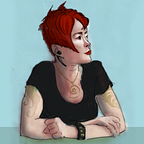The Dark Wave, 2022
DISCLAIMER
This blog has been conceived as a platform to share my thoughts and experiences of UX design and architecture, nothing more. To date, I have been steering clear of politics. I have no intention of turning my UX blog into a political one (there are much more appropriate platforms for that). So, this post will probably remain a one-off.
*******
I was half way through writing the third entry for my mini-series “Climate Stories” when the news from Ukraine hit. Since then, I have been unable to focus on UX blogging. Every effort to do so seems so futile, so small, so pointless.
I am hoping that, once I manage to regain my centre, I will resume my usual journaling projects.
But for now, here is a splash screen of sorts.
I am no artist; I draw diagrams for a living. UX wireframes are diagrams to help shape the experience of digital tech, whereas architectural drawings are diagrams to help build things from brick and mortar. Being the geek that I am, I revert to my comfort zone of diagrams at every opportunity, even when describing feelings.
This diagram is called “The Dark Wave, 2022.”
1. Global geopolitical forces
2. Socioeconomic landscape
3. Inter-generational trauma
4. “Positive attitude to life” • “I control my destiny” •“5 ways to your wellbeing” • “Thinking yourself happy” • “Everything happens for a reason”
YOU ARE HERE ->
It is an attempt to show just how miniscule, how skin deep, is the level of control that us individuals hold over our own fate. When the dark wave of those bigger forces hits you, your normality is washed away in an instant. No amount of positive thinking, CBT or belief in “pulling yourself by the bootstraps” will help you. You have no power over the gargantuan wave; you have no power over the missiles — whether metaphorical (bad enough) or real (indescribably horrific) — that life or death throws at you.
For those of us who are lucky to remain on the outside of the wave for now, it’s tempting to feel momentarily horrified, donate to a charity once and then move on. “Nothing else I can do.”
But there is something you can do. It’s not much, but it’s better to do this than to add a flag to your Facebook profile and consider your civic duty done.
As the tragic events unfold, I’m learning every day, and I may have got some of it wrong. Here is what I know today — here’s what you can do:
- Reject the deeply insulting narrative that “Things will work out in the end.” For many, or even for most, they won’t.
- Self-organise with others. Come together to build small change to alleviate the suffering of individuals who have been hit worse than you. Leave judgement at the door. You can’t know what trauma or pain someone else has been through, so do not assume anything.
- Be prepared to commiserate with others without any expectation that things will get better for them. Be prepared to listen; resist changing the subject or minimising when the conversation gets uncomfortable for you.
- Hold others’ pain. Without hope, without a fix, without a timescale. Just be there, prepared to hold the pain of others, even if it hurts you.
YOU ARE HERE.
If the power we have over our lives is only skin deep, then those of us who have been spared from the dark wave, must learn to work with these limitations and direct that power towards those who need it more than we do.
